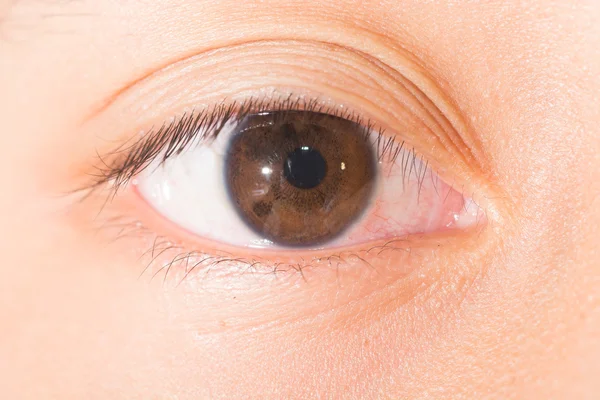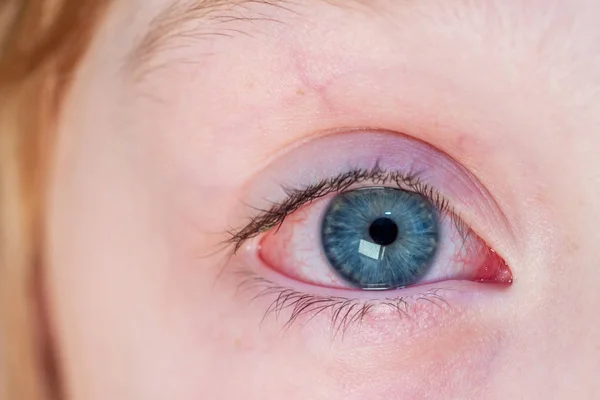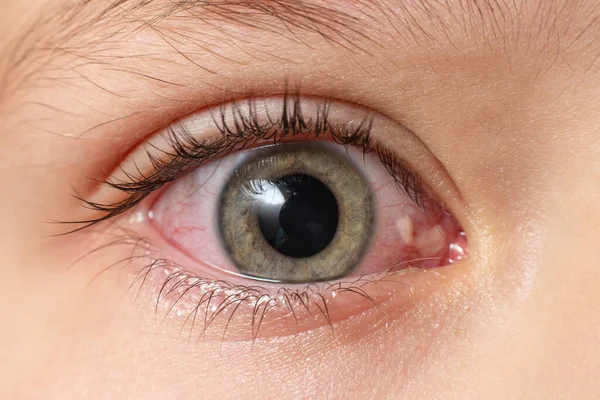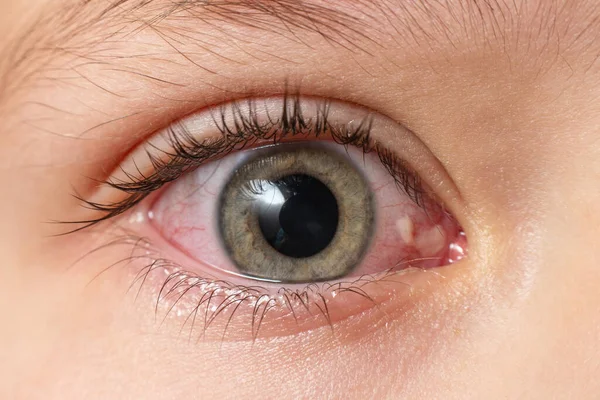
Eyes Infaction Recovery Drops
Understanding Eye Infections and Their Symptoms
Eye infections are a common issue affecting individuals of all ages. They can be caused by bacteria, viruses, fungi, or allergens and are often characterized by redness, swelling, itching, discharge, and blurred vision. Common types of eye infections include conjunctivitis (pink eye), styes, keratitis, and blepharitis.
Symptoms vary depending on the type of infection and its severity. While some infections are mild and resolve on their own, others require medical intervention. Eye infection recovery drops are specially formulated to provide immediate relief from discomfort and to help clear the infection.
These drops contain active ingredients like antibiotics, antihistamines, or anti-inflammatory agents that target the root cause of the infection, whether it is bacterial, viral, or allergic. Proper diagnosis and treatment are crucial to prevent complications and ensure a full recovery.
How Eye Infection Recovery Drops Work
Eye infection recovery drops are designed to combat infections by delivering medication directly to the affected area. These drops contain different types of active ingredients, such as antibiotics, antihistamines, antivirals, or steroids, each aimed at treating specific types of infections.
For bacterial eye infections, antibiotic drops help eliminate the bacteria and reduce inflammation. Antiviral drops are used for viral infections, while antihistamine drops help manage allergic reactions that cause eye redness and itching.
The effectiveness of these drops depends on proper usage, which includes following the prescribed dosage and duration of treatment.
Using eye drops incorrectly or discontinuing them prematurely can lead to recurrence or worsening of the infection. It’s also crucial to follow hygiene practices like washing hands before application to avoid further contamination.
Types of Eye Infection Recovery Drops and Their Uses
There are several types of eye infection recovery drops, each designed to treat specific eye conditions. Antibiotic drops, such as those containing ciprofloxacin or tobramycin, are used to treat bacterial infections like conjunctivitis and styes.
Antiviral drops, often containing ganciclovir, are effective for viral infections such as herpes simplex keratitis. For allergic eye conditions, antihistamine drops like olopatadine or ketotifen provide relief from itching and swelling.
Corticosteroid drops are sometimes prescribed to reduce severe inflammation and pain but are used under strict medical supervision due to potential side effects.
Lubricating drops, also known as artificial tears, may be recommended alongside medicated drops to keep the eyes moist and comfortable during the healing process. Knowing which type of drops to use is essential for effective treatment and recovery.
Proper Application Techniques for Eye Drops
The effectiveness of eye infection recovery drops largely depends on the correct application. To apply eye drops properly, start by washing your hands thoroughly to prevent introducing new bacteria or viruses into the eyes. Tilt your head back and gently pull down the lower eyelid to create a small pocket.
Hold the dropper close to the eye without touching it and squeeze out the prescribed number of drops. It is important to close your eyes gently and avoid blinking excessively, as this can push the drops out of the eye.
Wait at least five minutes before applying a different type of drop if more than one is prescribed. Proper application ensures that the medication is absorbed effectively and provides maximum benefits for recovery.
Precautions and Side Effects to Consider
While eye infection recovery drops are generally safe, they can have potential side effects, such as stinging, burning, or blurred vision immediately after application. More severe side effects like eye pain, swelling, or allergic reactions are rare but require immediate medical attention.
It is crucial to follow the prescribed dosage and not exceed the recommended duration of use, as overuse of certain drops, especially those containing steroids, can lead to complications like increased intraocular pressure or cataract formation.
Always inform your healthcare provider about any existing conditions, medications, or allergies to prevent adverse reactions. Taking these precautions ensures safe and effective recovery from eye infections.

Understanding Eye Infections
Common Types of Eye Infections
Conjunctivitis (Pink Eye)
Conjunctivitis, often called pink eye, is a common eye infection causing redness and inflammation of the conjunctiva. It can be viral, bacterial, or allergic in origin.
Blepharitis
Blepharitis is an inflammation of the eyelid margins. It often results in crusty eyelids and can be caused by bacterial infections or seborrheic dermatitis.
Keratitis
Keratitis refers to inflammation of the cornea. It may be caused by infection, injury, or underlying conditions and can lead to severe pain and vision problems.
Stye (Hordeolum)
A stye is a painful lump on the eyelid caused by a bacterial infection of an oil gland. It typically appears red and swollen.
Uveitis
Uveitis is an inflammation of the uvea, the middle layer of the eye. It can cause redness, pain, and vision loss if not treated promptly.
Causes of Eye Infections
Bacterial, Viral, and Fungal Pathogens
Various microorganisms can cause eye infections. Bacteria, such as Staphylococcus and Streptococcus, viruses like adenoviruses, and fungi can all be culprits.
Allergies and Environmental Irritants
Allergens and irritants, such as pollen, smoke, and dust, can trigger eye infections by causing inflammation and discomfort.
Improper Hygiene and Contact Lens Usage
Poor hygiene practices, including infrequent hand washing and improper contact lens care, increase the risk of eye infections. Dirty lenses or cases can harbor pathogens.
Symptoms and Signs
Redness, Itching, and Swelling
Eye infections commonly cause noticeable redness, persistent itching, and swelling of the eyelids and surrounding areas.
Discharge and Crust Formation
A common sign of eye infections is abnormal discharge, which can cause crusty build up around the eyes, especially after sleep.
Sensitivity to Light and Blurred Vision
Infected eyes may become sensitive to light and experience blurred vision, making everyday tasks difficult.
Understanding these aspects of eye infections can help in early identification and treatment, ensuring better eye health and comfort.

What Are Eye Infection Recovery Drops?
Eye infection recovery drops are specialized medications designed to treat and manage eye infections. Their primary purpose is to relieve symptoms and facilitate healing of the eye. These drops come in various types, each targeting different aspects of eye infections.
Role in Relieving Symptoms and Treating Infections
Eye infection recovery drops play a crucial role in alleviating discomfort such as redness, itching, and swelling. They help treat infections by delivering active ingredients directly to the affected area. These drops can speed up recovery and prevent complications.
Differentiating Between Various Eye Drops
Antibiotic Drops
These are used for bacterial infections. They help eliminate harmful bacteria, reducing symptoms and preventing the infection from spreading.
Antiviral Drops
Designed for viral infections, such as herpes simplex keratitis. They work by inhibiting viral replication, aiding in the management of symptoms.
Antifungal Drops
These drops target fungal infections of the eye. They are essential for treating conditions like fungal keratitis.
Anti-Inflammatory Drops
Used to reduce inflammation and discomfort. They are helpful for conditions like conjunctivitis and uveitis.
Lubricating Drops
Also known as artificial tears, these drops provide moisture and relief for dry eyes, which can be a side effect of some infections or their treatments.
Types of Eye Infection Recovery Drops
Antibiotic Eye Drops
For Bacterial Infections
Antibiotic eye drops, like Ciprofloxacin and Tobramycin, treat bacterial eye infections. They work by killing or inhibiting the growth of bacteria. Use these drops for conditions such as conjunctivitis or bacterial keratitis. Apply as prescribed by your doctor to ensure effectiveness and prevent resistance.
Antiviral Eye Drops
For Viral Infections
Antiviral eye drops, such as Acyclovir, are designed for viral eye infections. They work by stopping viral replication. These drops are commonly used for herpes simplex keratitis. Follow your ophthalmologist’s instructions for optimal results and to reduce symptoms.
Antifungal Eye Drops
For Fungal Infections
Antifungal eye drops like Natamycin target fungal infections in the eye. They are effective against fungi like Candida and Fusarium. These drops are crucial for treating fungal keratitis and similar conditions. Use them under medical supervision to ensure proper treatment.
Anti-Inflammatory Eye Drops
For Reducing Inflammation and Pain
Anti-inflammatory eye drops, such as corticosteroid drops, reduce inflammation and alleviate pain. They are prescribed for conditions like uveitis or severe allergic reactions. Caution is necessary as prolonged use can cause side effects. Consult your doctor for appropriate use.
Lubricating Eye Drops (Artificial Tears)
For Comfort and Recovery
Lubricating eye drops, or artificial tears, provide relief from dryness and discomfort. They help in recovery by keeping the eye moist and soothing irritation. These drops can be used alongside other treatments to enhance overall comfort and aid in healing.
Each type of eye drop plays a specific role in managing and recovering from different eye infections. For the best results, adhere to your healthcare provider’s guidance.
Choosing the Right Eye Infection Recovery Drops
Consultation with a Healthcare Professional
Before using eye infection drops, consulting with a healthcare professional is crucial. Proper diagnosis and prescription are vital for effective treatment. A doctor can identify the type of infection and recommend the most suitable eye drops. Professional advice ensures you receive the right medication for your specific condition.
Over-the-Counter vs. Prescription Eye Drops
Understanding the difference between over-the-counter (OTC) and prescription eye drops is essential. OTC drops are typically less potent and used for mild symptoms.
Prescription drops are stronger and tailored to treat more severe infections. Always choose based on your healthcare provider’s recommendations to ensure safety and effectiveness.
Considering Allergies and Sensitivities
When selecting eye drops, consider potential allergies and sensitivities. Check the active ingredients to avoid any adverse reactions. Some people may react negatively to preservatives or certain chemicals in eye drops. Opt for hypoallergenic or preservative-free options if you have sensitive eyes.
Age-Appropriate Formulations
Choose eye drops appropriate for the user’s age. Children, adults, and the elderly may require different formulations. Children’s eye drops often have milder ingredients, while elderly formulations might address age-related issues. Ensure the eye drops are suitable for the age group to maximize safety and effectiveness.
When selecting eye infection recovery drops, always prioritize professional guidance, understand the differences between OTC and prescription options, be mindful of allergies, and choose age-appropriate formulations.

How to Use Eye Infection Recovery Drops Safely
Proper Technique for Application
To use eye infection recovery drops safely, start by washing your hands thoroughly. Tilt your head back and gently pull down your lower eyelid to create a small pocket. Hold the dropper above your eye and squeeze out the prescribed number of drops, avoiding contact with your eye or eyelid to prevent contamination.
Close your eye and gently press on the inner corner of your eye to help the drops absorb. This technique ensures minimal contamination and maximizes the effectiveness of the medication.
Dosage and Frequency
Follow the dosage and frequency instructions provided by your healthcare provider. Use the eye drops as directed, typically multiple times a day.
Avoid overusing the drops as it can lead to potential side effects, including irritation or blurred vision. Be aware of common side effects and consult your doctor if you experience severe discomfort or if symptoms persist beyond the expected recovery time.
Storage and Handling
Store eye infection recovery drops at room temperature, away from direct sunlight and moisture. Ensure the dropper tip does not touch any surface to maintain sterility.
Check the expiry date on the packaging and discard the drops if they are past their expiration. Signs of spoilage include changes in color, consistency, or an unusual odor. Proper storage and handling help maintain the potency and effectiveness of your medication.
Potential Side Effects and Precautions
Common Side Effects
Skincare products can sometimes cause mild irritation, such as redness or a burning sensation. Users may also experience blurred vision if products come into contact with the eyes. These common side effects are usually temporary but should be monitored.
Severe Reactions to Watch For
Severe reactions include allergic responses like hives, swelling, or intense itching. Worsening symptoms, such as increasing redness or discomfort, are red flags. Changes in vision or persistent symptoms warrant immediate attention.
When to Discontinue Use and Seek Medical Help
Discontinue use if you notice severe allergic reactions or worsening skin conditions. Seek medical help if symptoms do not improve or if you experience significant changes in vision. Identifying these signs early can prevent more serious issues and ensure proper treatment.
Complementary Measures for Faster Recovery
Maintaining Eye Hygiene
Maintaining eye hygiene is crucial for a speedy recovery. Regularly clean your eyelids with a gentle cleanser to remove any debris. Avoid touching your eyes with unwashed hands to prevent the spread of bacteria. Simple practices like these help reduce the risk of infection and promote healing.
Avoiding Irritants and Triggers
To enhance recovery, steer clear of common irritants such as allergens, smoke, and dust. These triggers can exacerbate symptoms and delay healing. Use air purifiers or protective eyewear to shield your eyes from environmental pollutants. Keeping away from irritants supports a smoother and quicker recovery process.
Protecting Eyes During Recovery
Protecting your eyes during recovery is essential. Wear sunglasses to shield your eyes from UV rays and environmental debris. Avoid using makeup that might irritate your eyes or introduce harmful chemicals. Proper lens care, including cleaning and avoiding prolonged use, also helps in safeguarding your eyes.
Strengthening Eye Immunity
Boost your eye immunity through proper nutrition and hydration. Consume foods rich in vitamins and antioxidants, like leafy greens and berries, to support eye health.
Stay hydrated to maintain optimal eye function and prevent dryness. Incorporate eye exercises to improve strength and flexibility. These measures collectively enhance your recovery and overall eye health.
Prevention of Future Eye Infections
Proper Hand Hygiene and Eye Care Habits
Maintaining proper hand hygiene is crucial in preventing eye infections. Regularly washing hands with soap and water helps remove germs that can transfer to the eyes.
Avoid touching your eyes with unclean hands. Also, using clean towels and avoiding sharing eye makeup or other personal items minimizes infection risks. Simple habits like these are essential for eye health.
Safe Contact Lens Use
For those who wear contact lenses, following safety protocols is vital. Always wash hands before handling lenses and ensure they are properly cleaned and stored.
Avoid wearing contacts while swimming or sleeping, as these activities can increase infection risks. Regularly replace lenses as recommended and never use expired solutions. Safe contact lens practices prevent many common eye infections.
Regular Eye Check-Ups
Scheduling regular eye exams is important for early detection and prevention of eye infections. Eye doctors can spot signs of potential infections or other issues before they become serious.
Regular check-ups also ensure that any current issues are managed effectively, keeping your eyes healthy and free from infection.
Immunizations and Overall Health Maintenance
Keeping up with immunizations and overall health maintenance supports eye health. Vaccines such as the flu shot can prevent illnesses that may lead to secondary eye infections.
Maintaining good general health through a balanced diet and regular exercise boosts your immune system, helping to prevent infections, including those affecting the eyes.

FAQs
What Are Eye Infection Recovery Drops?
Eye infection recovery drops are specially formulated medicated drops designed to treat and alleviate symptoms associated with various eye infections, such as bacterial, viral, or fungal infections. These drops help reduce redness, swelling, itching, and discomfort while promoting faster recovery and preventing the spread of infection.
How Do Eye Infection Recovery Drops Work?
Eye infection recovery drops contain active ingredients, such as antibiotics, antivirals, or antifungals, depending on the type of infection being treated. These ingredients target and eliminate the pathogens causing the infection. Additionally, they may include anti-inflammatory agents to soothe irritation and lubricants to keep the eyes moisturized.
When Should I Use Eye Infection Recovery Drops?
You should use eye infection recovery drops as prescribed by a healthcare professional when you have symptoms like redness, itching, discharge, swelling, or pain in the eyes. It is crucial to get a proper diagnosis to determine the type of infection and receive the correct treatment.
How Long Does It Take for Eye Infection Recovery Drops to Work?
The time it takes for eye infection recovery drops to work varies depending on the severity of the infection and the type of drops used. Generally, improvement is noticed within a few days of consistent use. However, it’s essential to complete the full course of treatment even if symptoms improve to ensure the infection is fully cleared.
Are There Any Side Effects of Using Eye Infection Recovery Drops?
Common side effects may include temporary stinging, burning, redness, or blurred vision. These effects usually subside after a few minutes. If you experience severe side effects like persistent pain, vision changes, or allergic reactions (swelling, rash, difficulty breathing), seek medical attention immediately.
Can I Use Eye Infection Recovery Drops with Contact Lenses?
It is generally advised to avoid wearing contact lenses while treating an eye infection. Contact lenses can exacerbate the infection and may absorb the medication, reducing its effectiveness. Consult your doctor about when it is safe to resume wearing lenses.
How Should I Store Eye Infection Recovery Drops?
Store the drops in a cool, dry place away from direct sunlight. Make sure to keep the bottle tightly closed and follow the specific storage instructions on the packaging. Do not use the drops beyond the expiration date, as this can reduce their effectiveness and safety.
Can I Use Over-the-Counter Eye Drops for an Eye Infection?
Over-the-counter (OTC) eye drops can provide temporary relief for symptoms like dryness or irritation, but they are not formulated to treat infections. It is crucial to consult a healthcare professional for a proper diagnosis and prescription to ensure effective treatment.
What Should I Do If I Miss a Dose?
If you miss a dose of your eye infection recovery drops, apply it as soon as you remember. If it is almost time for your next dose, skip the missed dose and resume your regular schedule. Do not double the dose to make up for the missed one.
Are Eye Infection Recovery Drops Safe for Children?
Most eye infection recovery drops are safe for children, but dosages and formulations may vary. Always consult a pediatrician or eye specialist for the appropriate prescription and instructions for use in children.
Can I Use Eye Infection Recovery Drops During Pregnancy?
Some eye drops may be safe to use during pregnancy, but it is essential to consult with your healthcare provider before using any medication. They will assess the benefits and potential risks to ensure the safest treatment option for both mother and baby.
conclusion
In conclusion, Eye Infection Recovery Drops are a valuable tool for managing and alleviating symptoms associated with various eye infections, such as redness, itching, swelling, and discharge. These drops are typically formulated with ingredients that target bacterial, viral, or fungal pathogens, providing rapid relief and promoting healing.
Using them as directed can help reduce discomfort, prevent complications, and support a quicker recovery. However, it’s crucial to consult with a healthcare professional to ensure the correct diagnosis and treatment, as eye infections can vary in severity and may require additional medical intervention.

